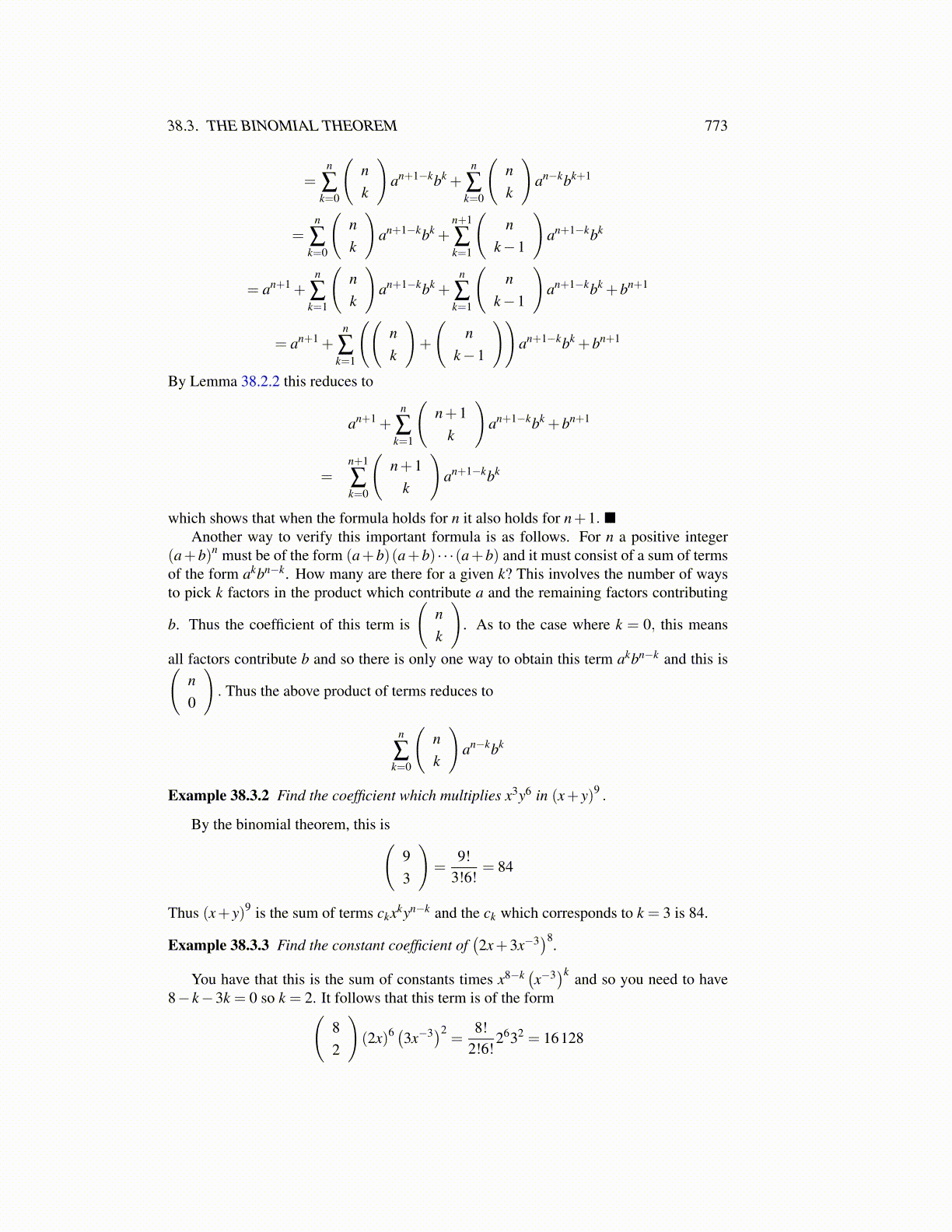
38.3. THE BINOMIAL THEOREM 773
=n
∑k=0
(nk
)an+1−kbk +
n
∑k=0
(nk
)an−kbk+1
=n
∑k=0
(nk
)an+1−kbk +
n+1
∑k=1
(n
k−1
)an+1−kbk
= an+1 +n
∑k=1
(nk
)an+1−kbk +
n
∑k=1
(n
k−1
)an+1−kbk +bn+1
= an+1 +n
∑k=1
((nk
)+
(n
k−1
))an+1−kbk +bn+1
By Lemma 38.2.2 this reduces to
an+1 +n
∑k=1
(n+1
k
)an+1−kbk +bn+1
=n+1
∑k=0
(n+1
k
)an+1−kbk
which shows that when the formula holds for n it also holds for n+1. ■Another way to verify this important formula is as follows. For n a positive integer
(a+b)n must be of the form (a+b)(a+b) · · ·(a+b) and it must consist of a sum of termsof the form akbn−k. How many are there for a given k? This involves the number of waysto pick k factors in the product which contribute a and the remaining factors contributing
b. Thus the coefficient of this term is
(nk
). As to the case where k = 0, this means
all factors contribute b and so there is only one way to obtain this term akbn−k and this is(n0
). Thus the above product of terms reduces to
n
∑k=0
(nk
)an−kbk
Example 38.3.2 Find the coefficient which multiplies x3y6 in (x+ y)9 .
By the binomial theorem, this is(93
)=
9!3!6!
= 84
Thus (x+ y)9 is the sum of terms ckxkyn−k and the ck which corresponds to k = 3 is 84.
Example 38.3.3 Find the constant coefficient of(2x+3x−3
)8.
You have that this is the sum of constants times x8−k(x−3)k and so you need to have
8− k−3k = 0 so k = 2. It follows that this term is of the form(82
)(2x)6 (3x−3)2
=8!
2!6!2632 = 16128